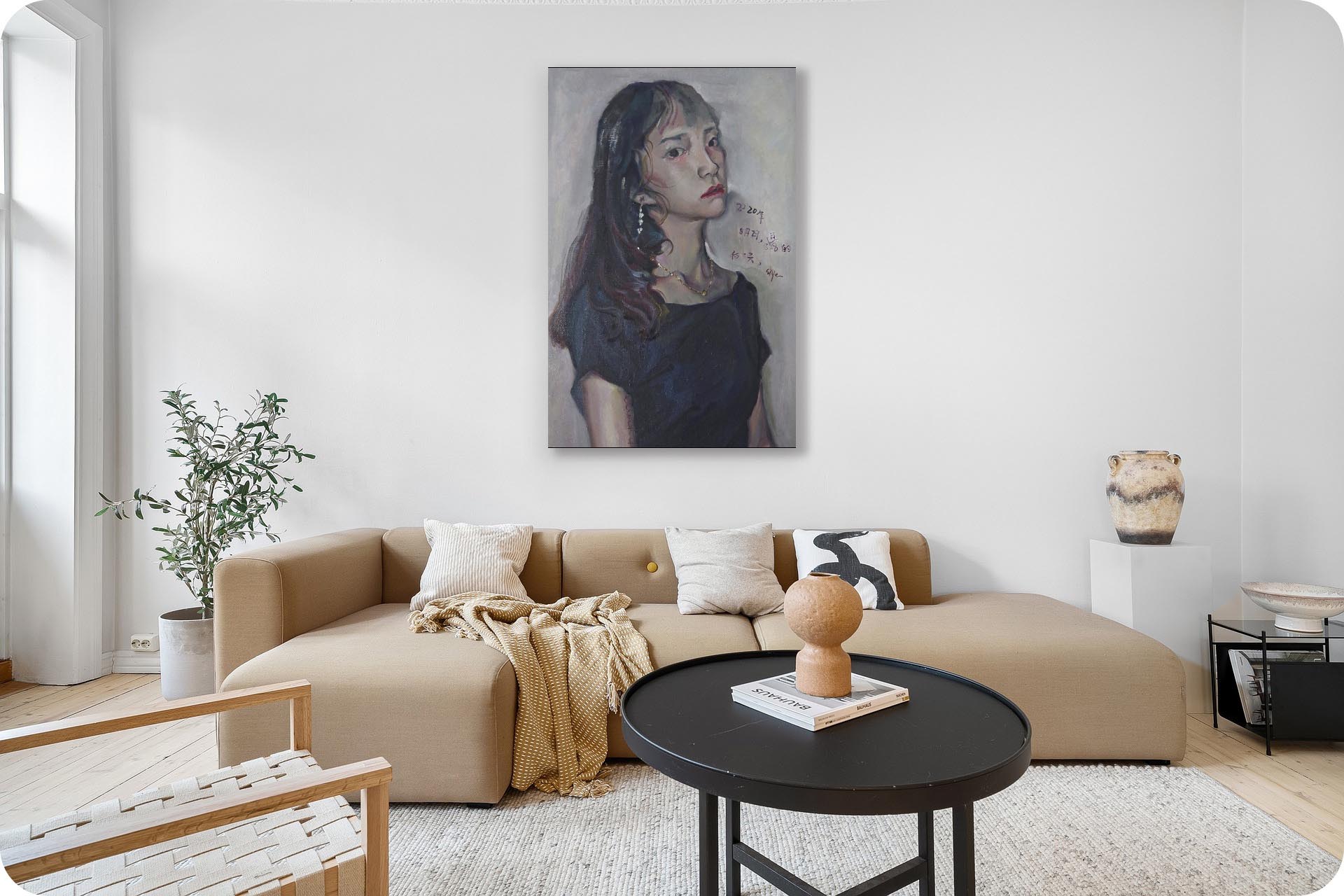This painting was created in 2020, the year I just graduated from college and was in a period of transition. The subject matter and style of painting continued from my college days.
The reference pictures for the series "Urban scene in architecture" all come from selfies taken by several of my friends. My friends and I met in the early days of "urban construction," and when I painted them, they were all hastily building themselves along with the urbanization process. This is the era I live in and the path that our peers in the same situation must take.
Inches: x in
Size without the frame: x cm
Country: China
Date: 2023
Materials: Oil paint on linen
Condition: well preserved
Creative themes and style | My works revolve around the creative concept of "The land of humanity, People on the land". The people in the painting are people in nature, and the lines, shapes, and colors are close to nature. The nature in the painting is nature in the eyes of humans, existing in interaction with humans.I don’t pursue a series of works with a fixed and continuous style. I hope that the style of the pictures will synchronize with the changes in my life and always remain oscillating. The performance of the work must be in sync with the development of one's own life in order to be Sincere and powerful. Ideas are later.
An Interview with Artist Philo by Artphiloso Gallery
If you would like to collect this artwork or know more about the artist, please contact us.
buy art,artist website,figure painting,painting on landscape.


In terms of content, the curly form of the figure’s hair strands, along with the embellishment of earrings and a necklace, endows the image with a sense of life warmth. The folds of the black clothing naturally extend along the body contours, enhancing the sense of realism. The composition follows the logic of portrait paintings focusing on figures. The figure occupies the main part of the picture. The handwritten text on the right (such as “August 29, 2020 ”) breaks the conventional visual balance and becomes a narrative element, adding a story dimension to the picture and guiding viewers to explore the connection between the text and the figure. The color application is subjective and hierarchical.
The light gray tone of the background is hazy and soft. Colors like brown, black, and blue in the figure’s hair strands interweave. The skin color of the face shows subtle cold - warm changes within the gray tone. The black clothing supports the subject with a deep tone, highlighting the figure’s presence through color contrast. The painting style leans towards expressive realism. It uses loose yet precise brushstrokes to shape the form, such as the color blending at the edges of the hair strands and the subtle undulations of the facial muscles. It not only retains the capture of figure features in realism but also incorporates the creator’s subjective emotions, avoiding the constraints of rigid realism.
The emotional expression is implicit and complex. The figure’s direct gaze and quiet posture form a dialogue with the handwritten text on the right, as if telling private memories of a specific time node, triggering viewers’ empathy for individual experiences and emotions. Similar artists can be associated with Lucian Freud’s exploration of the figure’s spiritual world. It can also be compared to contemporary artists’ attempts to incorporate text elements into portraits (such as some works of Zhang Xiaogang). With realism as the backbone and text as the wings, this painting conveys the figure’s emotions through colors and brushstrokes, making the portrait a carrier of time and memories, and showing the unique power of painting in connecting individual experiences within the details.
The subject’s eyes are painted with an assertive, chin-lifted posture, as if returning the viewer’s look with direct intensity. This transforms her from a passive object of observation into an active presence—imbued with undertones of doubt, resistance, and self-assertion.
The stray strands of hair are not decorative details; instead, they cut across the face like subtle fractures, partially veiling and unsettling the otherwise clear portrait. This visual disruption reflects the duality of refinement and unease—the outward polish of jewelry and adornment versus the inner complexity and tension.
Unlike the lighter garments in earlier works of the series, the dark attire makes the head and facial features more luminous by contrast. This enhances the dramatic intensity of the gaze and the red lips, while the darkness adds weight and austerity, amplifying the figure’s commanding presence.
The handwritten notes anchor the portrait in a specific time and personal context, disrupting the illusion of a timeless image. This gesture transforms the canvas into something intimate, almost like a diary entry, and weakens the formal distance of traditional portraiture by introducing narrative immediacy.
If the earlier works explored moods of concealment, detachment, downward reflection, and upward aspiration, this portrait represents the emotional peak. It is direct, sharp, and unyielding—a declaration of “no longer silent.” Within the series, it marks the culmination of a journey from introspection to assertion.
A: Click here to view ARTPHILOSO's Guide for Collectors.
